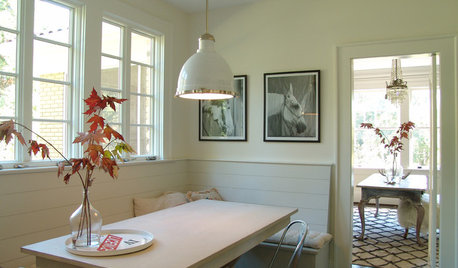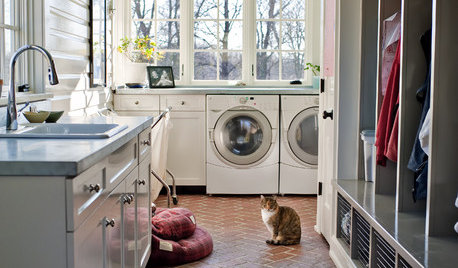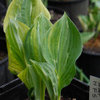yet another mending the soil question
steeltowninwv
9 years ago
Related Stories

GARDENING GUIDES10 Solutions for Soggy Soil
If a too-wet garden is raining on your parade, try these water-loving plants and other ideas for handling all of that H2O
Full Story
GARDENING GUIDESHow to Pick a Mulch — and Why Your Soil Wants It
There's more to topdressing than shredded wood. Learn about mulch types, costs and design considerations here
Full Story
GARDENING GUIDESHow to Stop Worrying and Start Loving Clay Soil
Clay has many more benefits than you might imagine
Full Story
LANDSCAPE DESIGNFlood-Tolerant Native Trees for Soggy Soil
Swampy sites, floodplains, even standing water ... if you've got a soggy landscape, these trees are for you
Full Story
FEEL-GOOD HOMESimple Pleasures: Make Do and Mend
Experience the satisfaction of fixing, repurposing and creating things yourself around the home
Full Story
REMODELING GUIDESConsidering a Fixer-Upper? 15 Questions to Ask First
Learn about the hidden costs and treasures of older homes to avoid budget surprises and accidentally tossing valuable features
Full Story
WORKING WITH PROS9 Questions to Ask a Home Remodeler Before You Meet
Save time and effort by ruling out deal breakers with your contractor before an in-person session
Full Story
HOUSEKEEPINGDon't Touch Another Stain Before You Read This
Even an innocent swipe with water may cause permanent damage. Here's what to know about how rugs and fabrics react
Full Story
HOUSEKEEPINGAnother Independence Day: When Kids Can Do Their Laundry
Set yourself free and give your child a valuable life skill at the same time
Full Story
CONTAINER GARDENSContainer Garden Basics: How and When to Water Potted Plants
Confused about soil moisture, the best time to water and what watering device to use? This guide can help
Full StorySponsored
More Discussions








funnthsun z7A - Southern VA
lazy_gardens
Related Professionals
Reading Landscape Architects & Landscape Designers · Franconia Landscape Architects & Landscape Designers · Horsham Landscape Architects & Landscape Designers · River Forest Landscape Architects & Landscape Designers · Arden-Arcade Landscape Contractors · North Richland Hills Landscape Contractors · Rochester Landscape Contractors · Wheat Ridge Landscape Contractors · Palos Heights Landscape Contractors · Parker Driveway Installation & Maintenance · Apache Junction Fence Contractors · Hackensack Fence Contractors · La Grange Fence Contractors · San Mateo Fence Contractors · Turlock Fence ContractorssteeltowninwvOriginal Author
hosta_freak
Mary4b
ctopher_mi
steeltowninwvOriginal Author
User
steeltowninwvOriginal Author
anniegolden
funnthsun z7A - Southern VA
hosta_freak
steeltowninwvOriginal Author
funnthsun z7A - Southern VA
ken_adrian Adrian MI cold Z5
hosta_freak